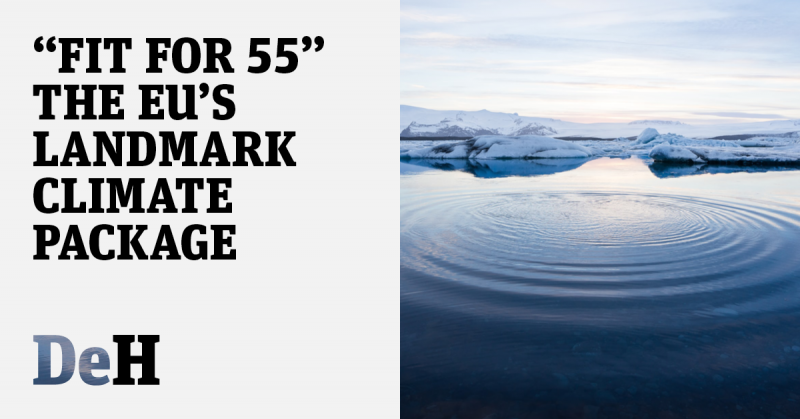
The Slovenian Presidency of the Council of the EU started with a bang. Just 14 days in, the European Commission published its most ambitious climate package to date.
The ‘Fit for 55’ package is an overhaul of transport, energy and environment legislation with the addition of new laws to help the EU reach the target of cutting emissions by 55% by 2030.
But are the measures radical enough? How have the industries affected responded? And will the member states be able to agree on…anything?
Here are the top three areas of the package to watch over the coming months...
1. Carbon pricing on the forefront
One of the most controversial proposals in the package is the Carbon Border Adjustment Mechanism (CBAM), which will impose a levy linked to carbon prices involving in the import of products such as steel, aluminium, fertilisers and cement.
The debate is focusing on the EU’s trading partners and third countries that will be impacted by the measure. Already, Russia – the EU’s biggest supplier of carbon-intensive products and its fifth-largest trading partner - expects to lose $7.6 billion from the CBAM.
Lobbying from other countries, especially the US, China and Turkey is expected - not least from those thinking of introducing carbon pricing themselves like Canada and again, China.
2. The time of hydrogen
A core focus is the push towards greater use of renewable hydrogen. The Commission has proposed a 50% target for “renewable fuels of non-biological origins” (green hydrogen) in the share of hydrogen fuels used in European industry by 2030.
The industry appears satisfied with the revisions of the energy directives and the ambitious targets to support the creation of a hydrogen economy. Spain and Italy have the same feeling.
Not everyone in Europe is happy though. Environmental NGOs believe that the focus on hydrogen risks promoting their use in the automotive sector, where electrification is more efficient.
Meanwhile, despite the National Hydrogen Council recommending the promotion of green hydrogen, the German industry supports the so-called ‘blue hydrogen’ (derived from natural gas).
We will have to wait and see if there will be a north-south divide on the issue.
3. The Road ahead for transport
The message from the European Commission is clear: the transport sector has to collaborate on a pathway towards decarbonisation.
A proposal for an Alternative Fuels Infrastructure Regulation ensures that the greening of the transport fleets is supported by adequate recharging and refuelling infrastructure. It guarantees that in each member state sufficient public charging capacity will be in place to meet the demands of the fleet of zero emission cars that will come to market. The industry is concerned over tougher emissions targets for cars and trucks over the next decade, including the requirement for all new cars to have zero emissions from 2035.
For the aviation sector, the ReFuelEU initiative proposes a blending mandate for sustainable aviation fuels (SAFs). In the energy taxation proposal, it says that airlines operating in and from the European Union will be subject to a new tax on aviation fuel, meaning that kerosene used in the aviation industry for intra-EU flights would be taxed at least €10.75/GJ EU-wide. The new tax has come under fire already with airlines stressing that it dis-incentivises innovation and real decarbonisation efforts.
Next steps and timings
Fit for 55 is expected to take years of negotiations, despite the Slovenian Presidency’s commitment to publish a progress report in December 2021. The room to manoeuvre is low, and negotiators will have to balance the industry requests, the differences in the priorities between the national governments and the pressure from the European Parliament. Countries’ positions are likely to diverge given the different mix of sectors that will need to be balanced out with member states’ political interests.
As negotiations will continue to 2022 and potentially 2023, France is expected to play a central role in leading negotiations on the package as the country takes over the Presidency of the Council next year. This period, coincidentally, will align with the French Presidential elections.
